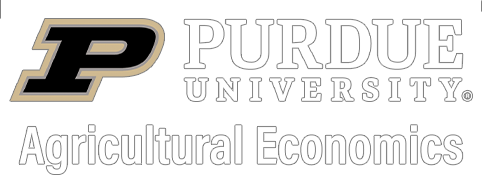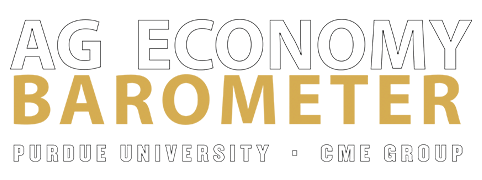February 13, 2017
Hog Prices Outperform Expectations
The pork industry outlook has experienced a major shift to the upside. Pork producers are pleased to see 2017 hog prices higher than expected. The low point for the industry was in late November when hog prices dropped to near $32 per hundredweight on a live weight basis. Recent live prices have reached the mid-$50 and have pulled the industry out of deep losses into profitability.
The leading reason for the more favorable outlook is lower retail pork prices. Some have mentioned how strong pork consumption has been this year. One reason for that strength is lower retail pork prices. The “law of demand” says that people will buy more when prices are lower, and retail pork prices have moved lower.
Retail pork prices peaked in 2014 because of reduced supplies due to the PED virus and have generally been falling since 2015. In the final quarter of 2016, retail pork prices dropped 26 cents per pound from the same period one year earlier. The downward movement continued in January of this year with retail pork prices down 22 cents per pound from one year earlier.
An additional issue contributing to the extremely low prices for pork producers last fall was the small portion of the retail dollar getting back to producers. Another way of saying this is that the margins for the processors and retailers remained substantially higher than normal. As a result, the portion of the retail pork dollar that got back to the producer dropped to 17.5 percent. This was lower than the previous record low of 18.4 percent in the financially tragic final quarter of 1998.
Data this year are only available for January, but in that month the producer share increased to 22 percent. In cents per pound, the hog producer received 15 cents more per retail pound. That amounts to about $9.00 per hundredweight higher prices on a live hog. Lower retail prices are moving more pork and the pork producer is getting a higher percentage and a higher total value from the pork being sold.
For the rest of 2017, there is room for even lower retail prices and a higher percentage of that retail price getting back to the hog producer. Probably the biggest opportunity for hog producers is the advent of new processing capacity coming on line in the last half of 2017. The added competition for hogs will likely reduce the farm-to-wholesale margins with much of that reduction bid into higher hog prices. In 2016, for example, USDA reported the farm-to-wholesale margin as 70 cents per retail pound compared to 58 cents in 2015. Export demand remains a positive for the 2017 hog price outlook as well. USDA expects a four percent increase in exports with little change in imports.
Pork supplies are not the reason for higher hog prices in 2017. So far this year, pork production has been about three percent higher than for the same period last year.
Live hog prices are now expected to average near $51 for 2017, up from $46 in 2016. Live prices are expected to average in the very high $40s in the first quarter, then move to the low-to-mid $50s in the second and third quarters, and then finish the final quarter in the mid $40s.
Total costs of production for 2017 are expected to be near $50 per live hundredweight, similar to the annual forecast price of hogs. If so, this means pork producers will recover full costs of production in 2017. Losses in the first and fourth quarter would be offset by profits in the second and third quarter.
There has been an overall improvement in prospects for animal and animal product prices since last fall. That is true for beef, pork, and milk markets. The source of that improvement may well be related to the general improvement in the anticipated economic growth rates for the U.S.-think of the stock market increases since the election. These increases are largely based on anticipated policy that will stimulate the economy, including tax cuts, infrastructure spending, and reduced regulations.
Markets for animal products remain vulnerable to at least three outcomes that could differ from current optimism: 1) The anticipated economic stimulus is not implemented, 2) The strength of the U.S. dollar slows agricultural export sales from anticipated levels, and 3) The U.S. moves in a direction of more protectionism that increases trade barriers and reduces our agricultural export sales potential.
Each industry is trying to figure out what the new administration means for them. Agriculture incomes are importantly influenced by the domestic economy, by the global economy, by exchange rates, and by trade. Agriculture, like other industries, must take a “wait and see” attitude.
TAGS:
TEAM LINKS:
RELATED RESOURCES
UPCOMING EVENTS
We are taking a short break, but please plan to join us at one of our future programs that is a little farther in the future.



